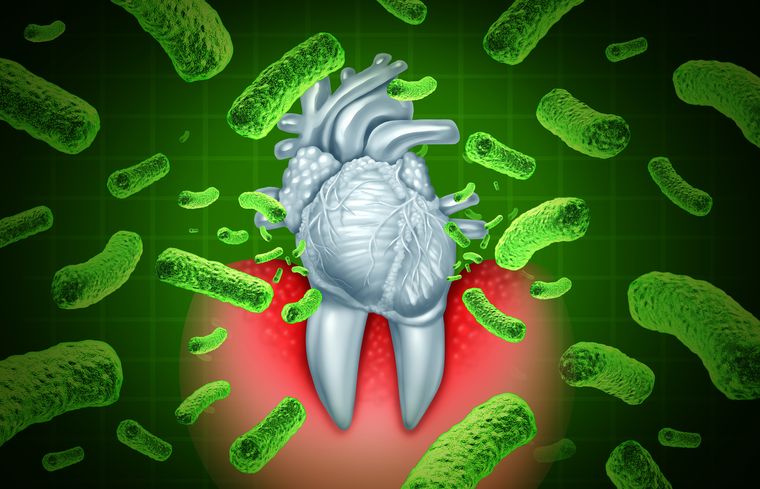A US STUDY PUBLISHED in the Annals of Surgical Oncology finds that breast cancer patient survival improves when the time from diagnosis to treatment conclusion is limited.
The findings were based on 28,284 newly diagnosed patients with stage I to III breast cancer who received all three treatment modalities—surgery, chemotherapy and radiation.
The median age of the study patients at the time of diagnosis was 53.8 years. Among them, 28.6 per cent of the patients had stage I cancer, 44.4 per cent had stage II, and 27.0 per cent had stage III breast cancer. The patients were followed for an average of 5.8 years.
Completing all three treatment options within 38 weeks from diagnosis was associated with improved survival.
Patients who did not complete their treatments within 38 weeks had lower overall survival. The five-year overall survival rate in those who completed treatment within 38 weeks was 89.8 per cent compared to 83.3 per cent in those whose treatment extended beyond 38 weeks.
20,772 patients had surgery first, followed by chemotherapy and radiation therapy, whereas 7,512 patients had chemotherapy first, followed by surgery and radiation therapy.
More patients who underwent neoadjuvant chemotherapy first experienced longer delays than patients who underwent surgery first.
Gum disease tied to heart disease
GUM DISEASE (periodontitis) can increase the risk of cardiovascular disease and the risk increases with the severity of the gum disease.
The risk is especially greater among heart attack survivors, concludes a Swedish study presented at the meeting of the European Society of Cardiology.
The Swedish researchers had previously found that gum disease was much more common in first-time heart attack patients compared to a group of healthy people of the same age and sex.
The new study examined whether gum disease was associated with an increased risk of new heart problems in both heart attack survivors as well as the healthy group.
The study included 1,587 participants with an average age of 62 years. Dental examinations showed that 985 did not have gum disease, 489 had moderate periodontitis and 113 had severe periodontitis.
During an average follow up of 6.2 years, there were 205 incidences of cardiovascular events and death.
Participants with gum disease were 49 per cent more likely to die of any cause, have a nonfatal heart attack or stroke, or to develop severe heart failure. The risk increased with the severity of the gum disease.
Mediterranean diet could help men with erectile dysfunction
A MEDITERRANEAN DIET is known to improve heart and brain health. A new Greek study presented at the European Society of Cardiology's annual meeting suggests it could also reduce the risk of erectile dysfunction.
The Mediterranean diet focuses on fruits, vegetables, whole grains, fish and olive oil, modest consumption of dairy products and poultry, and limiting red meat.
The study included 250 men, average age 56 years, with high blood pressure and erectile dysfunction.
The participants underwent different tests to see if their dietary habits were linked with fitness, testosterone levels, blood flow, arterial stiffness, and erectile performance.
Men with a higher Mediterranean diet score had healthier arteries, better blood flow throughout the body, higher testosterone levels, better erectile performance, and better exercise capacity.
Those who were more physically fit did even better on all these metrics.
Did You Know?
When is a person with Covid-19 most contagious? Two days before and three days after they develop symptoms.
JAMA Internal Medicine
Night-shift workers, beware
PEOPLE WHO WORK night shifts have an increased risk of developing atrial fibrillation (AFib), a heart rhythm disorder, as well as coronary heart disease.
The study published in the European Heart Journal was based on 2,83,657 people in the UK Biobank database.
During an average follow-up of over ten years, 5,777 people developed Afib.
Those who worked night shifts on a usual or permanent basis had a 12 per cent increased risk of AFib compared to people who only worked during the day.
The risk was 18 per cent higher after ten or more years for those who worked a night shift for their entire life and 22 per cent higher for those who worked an average of three to eight night shifts a month for ten years or more.
Working night shifts also increased the risk of coronary heart disease by 22 per cent to 37 per cent compared to daytime work.
Women had a greater risk of AFib than men. Women who worked night shifts for more than ten years had a 64 per cent increased risk compared to day workers.
However, night shift workers who exercised regularly had a lower risk of atrial fibrillation compared to night shift workers who did not.
Cast or brace?
ACCORDING TO A BRITISH study published in the BMJ, using a functional brace is just as effective as a traditional cast for treating broken ankles.
Ankle fractures have traditionally been treated with a cast, which provides maximum support to bones during healing. But this rigid immobilisation can cause stiff joints and weakened muscles. Removable braces can address these issues and allow patients to perform leg exercises and keep their leg clean.
The four-year trial included 669 patients with an ankle fracture. They were randomly assigned to receive either a cast (334 patients) or removable brace (335 patients).
Those who got the brace were asked to take the boot off three times a day and perform ankle strengthening exercises.
After four months, the participants answered questions about functionality and pain when walking, climbing stairs, running, jumping and squatting; any swelling or stiffness; and the use of supports and activities.
Their answers were combined into a score called the Olerud Molander Ankle Score and the researchers compared the scores for both groups.
There was no statistically significant difference in the scores of the two groups.
Did You Know?
High-risk patients with mild to moderate Covid-19 who were treated with two monoclonal antibodies—combination of casirivimab and imdevimab—had a 60 per cent to 70 per cent lower risk of hospitalisation than untreated patients. Of those who were hospitalised, rates of ICU admission and death were low.
EClinicalMedicine
Delay retirement for delaying dementia
ACCORDING TO A SCOTTISH study published in the journal SSM Population Health, delaying retirement may help you retain your cognitive function longer.
To study the impact of postponing retirement to age 67 on later-life cognitive function, the researchers used data on 20,469 Americans aged 55 to 75 years.
About 45 per cent of the participants were retired, while the remaining were in full- or part-time work.
The study found a 30–34 per cent reduction in cognitive decline among men and women who remained employed compared to those who retired younger than age 67.
The protective benefits of working longer applied to both men and women and people of all ethnic groups, regardless of their educational and occupational attainment and health. But the greatest benefit was seen in the highest educated.
According to the study authors, the protective effect can be attributed to a “slowed rate of cognitive decline” rather than a “boost in cognitive function.”
Biological block
ACCORDING TO A BRITISH study published in Acta Obstetricia et Gynecologica Scandinavica, the chances of fathering a child tend to decline for men after age 50, irrespective of the mother’s age.
The study was based on couples undergoing fertility treatments. The researchers reviewed 4,833 in-vitro fertilisation/intracytoplasmic sperm injection (IVF/ICSI) cycles, involving 4,271 men.
Among them, 1974 cycles (40.8 per cent) resulted in a live birth.
The probability of a live birth was 33 per cent lower for men older than 50 years of age compared to younger men.
Delaying parenthood is becoming more common for both men and women throughout the world.
Previous studies have shown that increasing paternal age can increase the risk of adverse pregnancy outcomes such as increased odds of gestational diabetes in the mother as well as child outcomes such as preterm birth, neonatal seizures and several neuropsychiatric disorders.
Older men may also have poorer semen quality: decrease in total sperm numbers and sperm concentration, reduction in motility and sperm DNA fragmentation.
Some medications may raise blood pressure
IF YOU HAVE HIGH blood pressure, you may want to check all the medications that you are taking with your doctor.
A review of data from 27,599 adults found that one in five of them were taking medications that could raise their blood pressure.
About half of the study participants had hypertension. Among them, 19 per cent of them were taking a medication that can raise blood pressure and 4 per cent were taking more than one.
Women and older adults were more likely to use a blood pressure-raising medication. The three most used classes of medication were antidepressants, nonsteroidal anti-inflammatory drugs (NSAIDs) that include ibuprofen and naproxen and oral steroids prescribed for conditions such as gout, lupus or rheumatoid arthritis. Other medications included antipsychotics, certain oral contraceptives and popular decongestants.
The researchers suggest that, in some cases, instead of treating high blood pressure with more medications, it would be wiser to lower blood pressure by deprescribing or prescribing other classes of medications to treat the same condition that has less impact on blood pressure.
The findings of the study were presented at the American College of Cardiology’s Annual Scientific Session.
Did You Know?
People who consume flavonoid-rich food such as berries, apples, pears and wine regularly have lower blood pressure which could reduce the risk of stroke and heart disease.
Hypertension
Step to a healthy life
TAKING 7,000 steps a day can help you live longer.
According to a study published in JAMA Network Open, people who took about 7,000 steps a day had a 50 per cent to 70 per cent lower risk of dying of all causes when compared with people who took fewer steps each day.
The study was based on 2,110 participants aged 38 to 50. They were divided into three groups based on their daily step count: low (less than 7,000), moderate (7,000-9,999) and high (more than 10,000).
During an average follow up of about 11 years, 72 of the participants died—most commonly from cancer or cardiovascular disease. Walking faster and step intensity, or the number of steps per minute, also did not reduce the risk of dying.
There was a difference in longevity benefits among men and women. Compared with the low step group, moderate/high step rate was associated with a 58 per cent and 72 per cent reduced risk of mortality in men and women, respectively.
CONTRIBUTOR: SHYLA JOVITHA ABRAHAM








